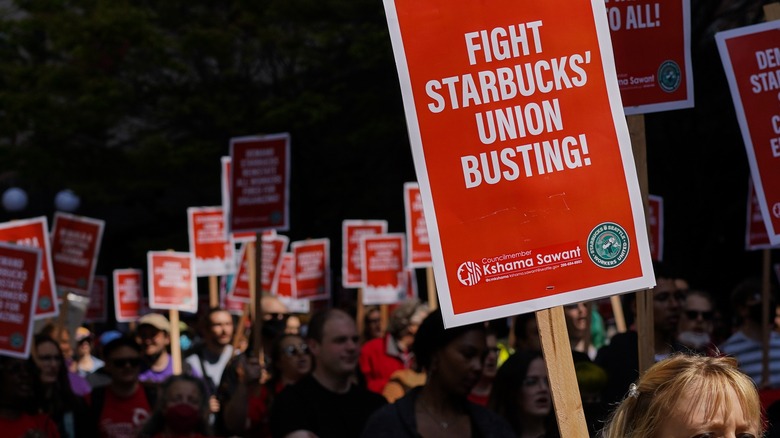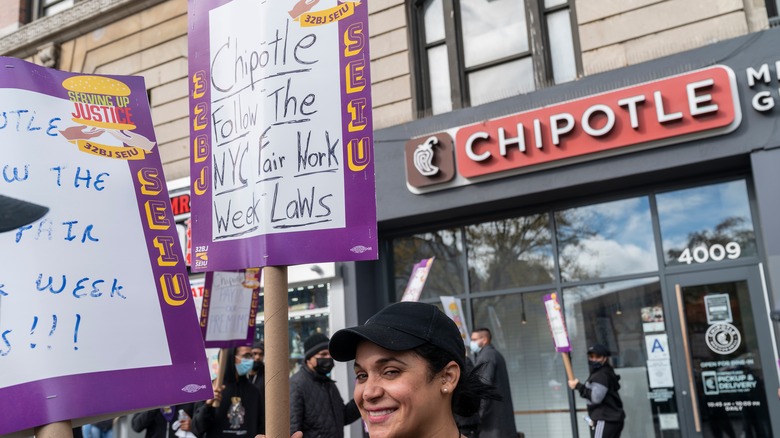Worker Strikes Took Over The Food Landscape In 2022
The end of the year is quickly approaching, which is grounds for reflecting on the good, the bad, and the ugly that shaped yet another chaotic turn around the sun. When we look back on 2022, we'll think of the widespread inflation that spanned industries and, as of this writing, persists across the globe. In tracing the manifold causes of rising prices, we'll think of Vladimir Putin's war on Ukraine; how it engendered vast resource blocks that affected farmers around the world and gave way to record-high gas prices (per CNBC). We'll think of the devastating droughts that scorched vital crops in California, Mexico, China, and Europe — the latter of which saw its driest year in five centuries (per BBC).
Finally, we'll think of food workers, whose push for better treatment in the workplace through union representation, led to one of the most prolific labor movements in recent history. U.S. worker petitions to unionize increased by 57% between October 2021 and March 2022. Here's a look at the strikes, negotiations, and wins that shook up the food landscape this year.
Starbucks, Chipotle, and beyond
If you disregard "virtual restaurants" and alcohol-free liquors, we agree with Eater's Amy McCarthy that worker strikes have proven to be "the hottest trend" of 2022. Starbucks workers have been at the forefront of the movement, bolstered by ample support from the National Labor Relations Board. Employees at the coffee chain have been rallying for representation under Workers United nationwide since 2021, sparked by a highly publicized union vote at an outpost in Buffalo, New York. Since then, Starbucks workers have secured negotiation meetings, however fraught, with high-ups at the company, hoping to come to a consensus on issues like wages, training, and safety in the workplace.
In August 2022, Chipotle workers at Lansing, Michigan voted to form a union with the International Brotherhood of Teamsters, becoming the first unionized outpost of the fast-casual chain, Slate reports. A few months earlier, in May, workers at McDonald's, Dollar General, and Wendy's banded together for a global day of action. "Workers at billion-dollar corporations from Dollar General to McDonald's still make on average less than $15 an hour while often being forced to work in unsafe, grueling conditions," writes The Guardian.
The list goes on, from Trader Joe's to Amazon to smaller "mom-and-pop spots," per Eater. We have no reason to believe the trend will fizzle out in 2023. If all goes well, we can expect the movement to expand beyond picket lines and into conference rooms.

